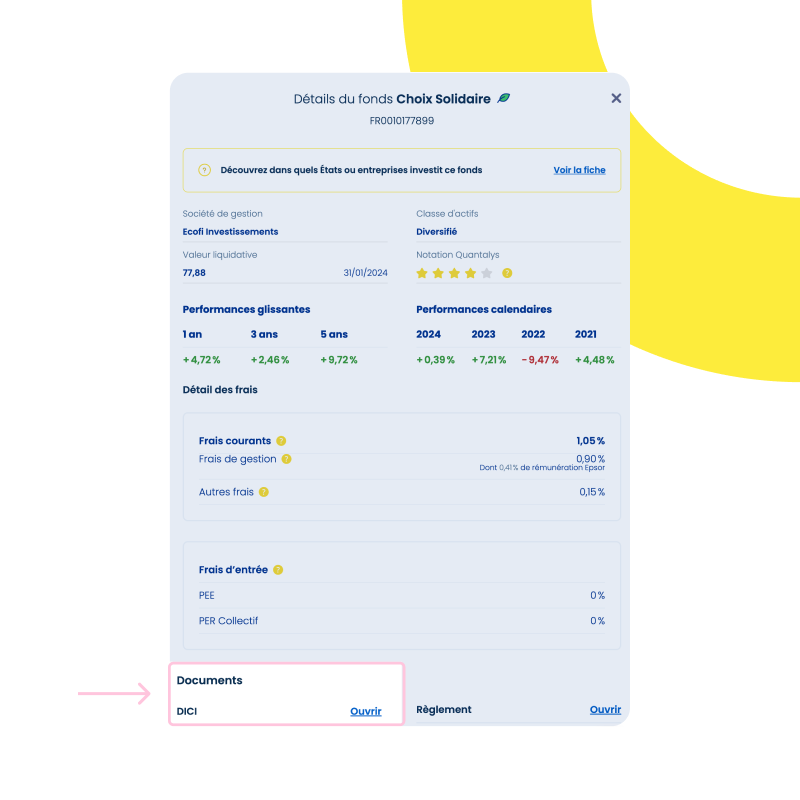

What is the DICI?
This content has been automatically translated.
The Key Investor Information Document (KIID) is a legal document which allows you to synthetically compare several funds with each other , particularly in terms of investment policy, risk profile and fees.
What does the DICI tell us ?
The header includes the identification data of the fund (Name of the fund, ISIN number, Name of the management company) then, 5 parts are presented:
Investment objective and policy
This part details the fund's management strategy, the benchmark index and the type of assets in which your money is placed (Monetary, Bond, Equity).
Risk and performance profile
The risk and performance profile is measured on a scale from 1 to 7. It is calculated based on past information, it may change and is not an indicator of future performance.
Expenses
In this section you will find the list of fees and commissions charged by the manager. There are several types of fees:
Entry fees, paid once upon subscription.
Ongoing costs (including management fees).
A possible performance fee, if the fund outperforms the set objective, the manager is remunerated by applying additional fees.
Past performance
Using a histogram, you can view the fund's past performance compared to the benchmark. Please note, past performance is no guarantee of future performance.
Useful information
The document gives you other information such as the custodian of the fund, legal category, ways to obtain other information about the product like prospectuses, periodic reports. The DICI is updated annually.
SRI labeled funds
For SRI-labeled funds, it indicates the investment strategy and the methodology applied to define its investment universe.
Where can I consult the KIID of a fund in the Epsor range ? 🔎
From your Epsor personal space by clicking on the “fund range” tab on the left then on “detail” next to funds.
